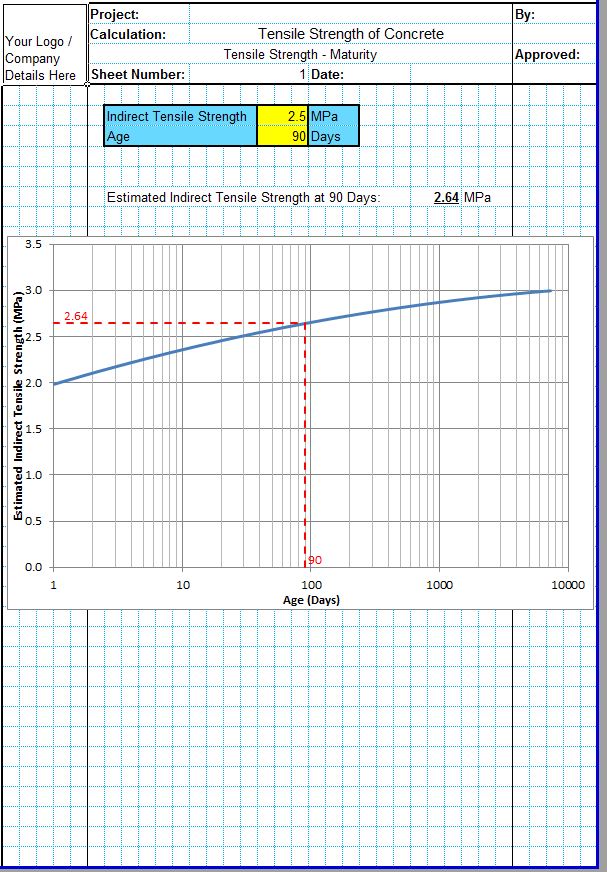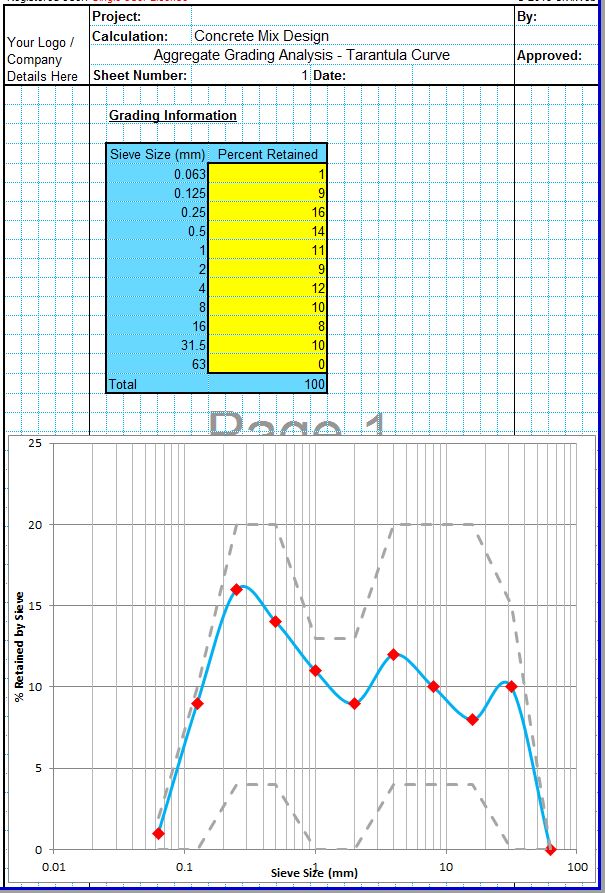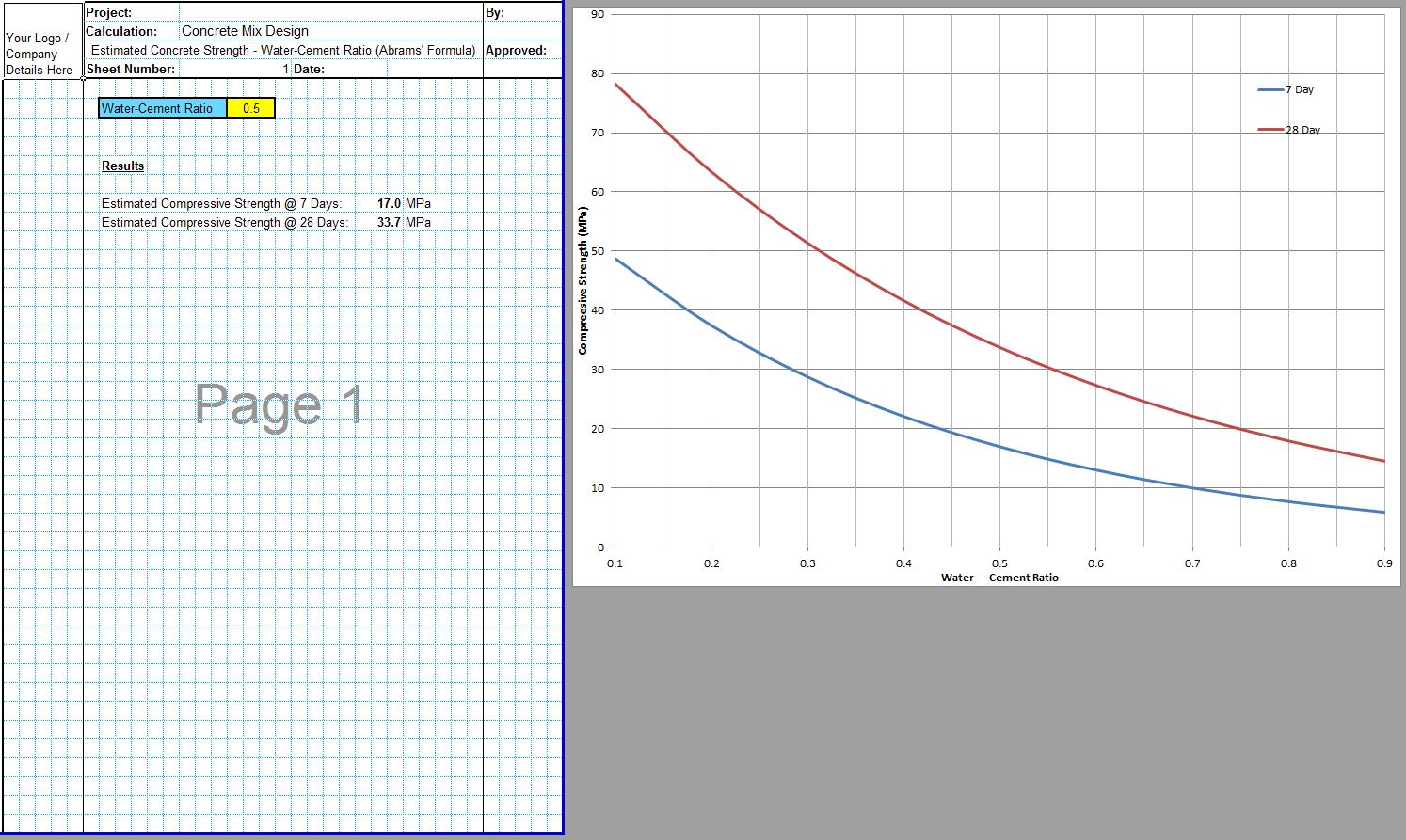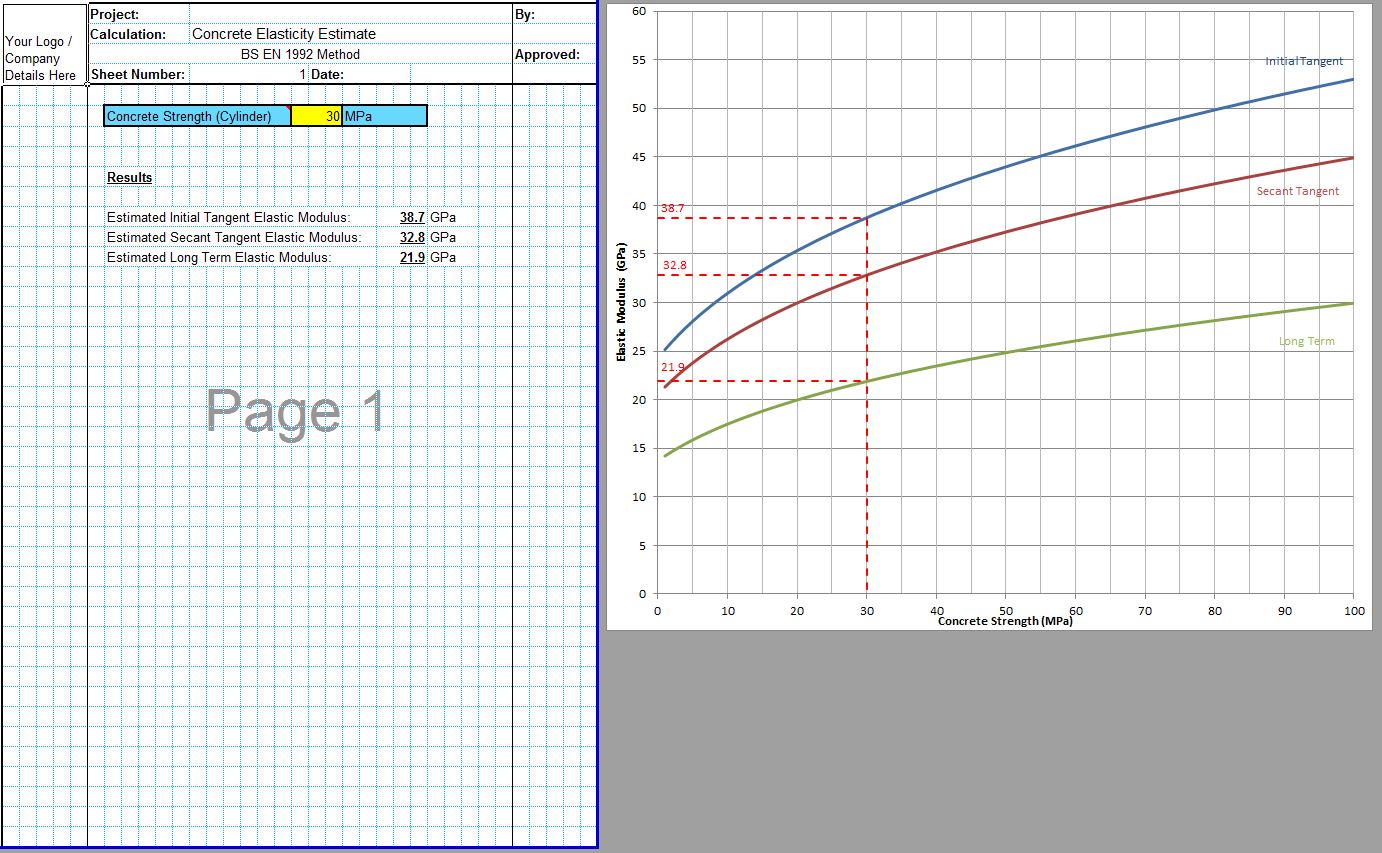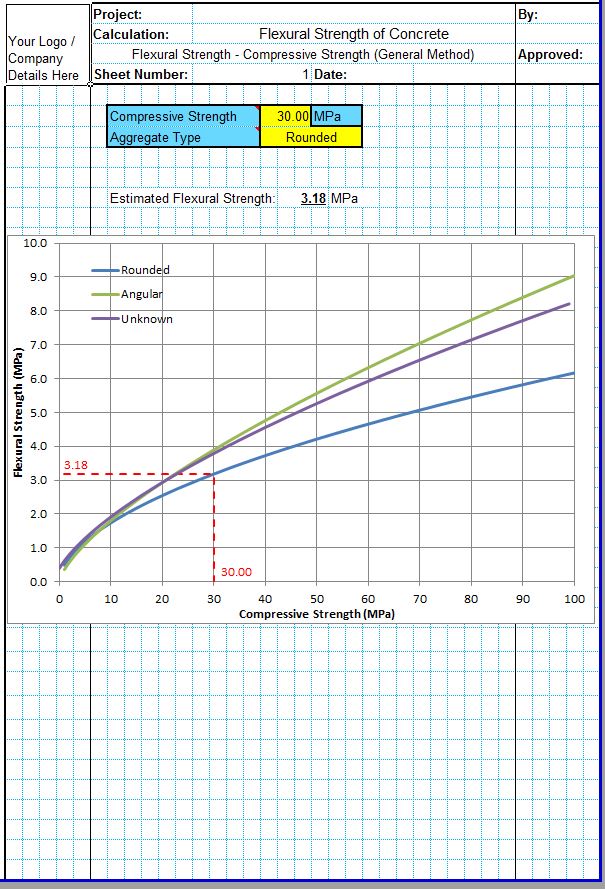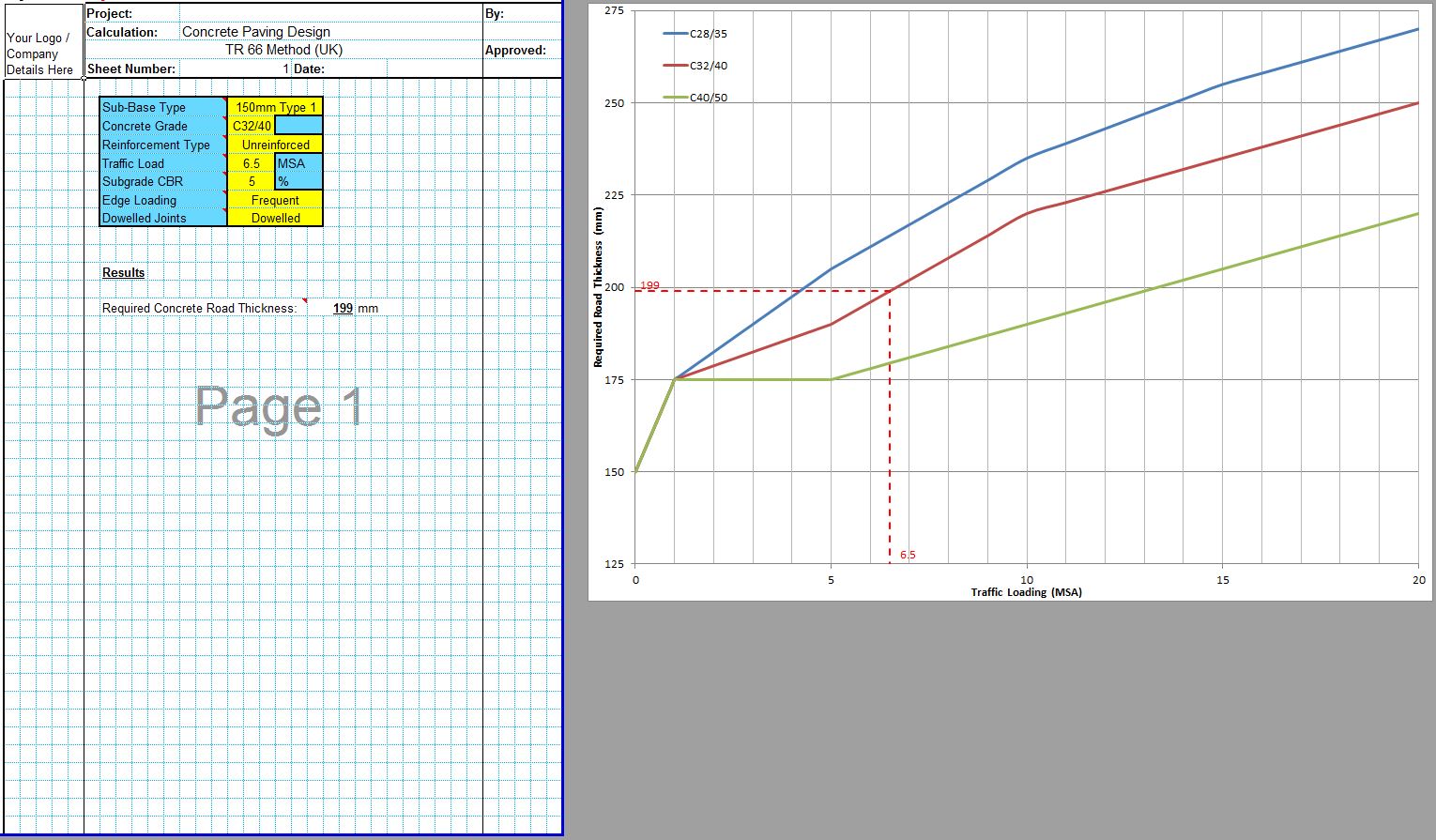A concrete cube test is the standard method of determining the compressive strength of a concrete sample in the UK. In the US and much of Europe a similar concrete strength test called a concrete cylinder compression test is performed on a standard cylindrical sample.
The CivilWeb Compressive Strength of Concrete spreadsheet includes a useful tool for the designer to determine the required average results from a compressive strength test of the concrete in order to satisfy the required characteristic strength. This can be used to determine from a small sample of tests whether a concrete mix is likely to meet the specified compressive strength of the concrete or not.
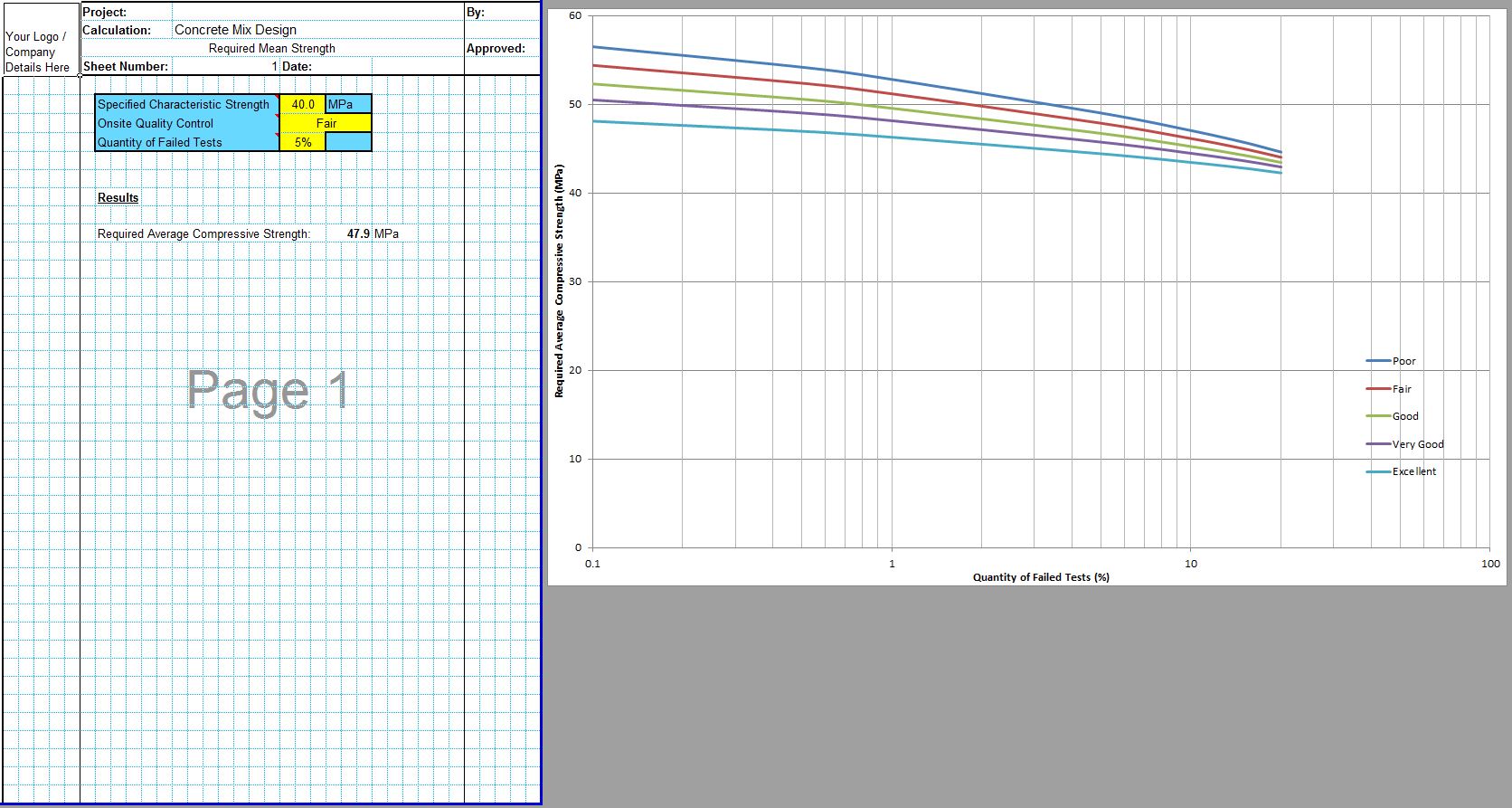
Concrete Cube Test Dimensions
In the UK the crushing strength of concrete is measured using compressive strength tests of concrete involve the crushing of 150mm cubes. The correct standard concrete cube size is ensured by using a standard concrete cube mould.
In the US and most of Europe the compressive strength of a concrete cylinder is measured. The concrete cylinder test procedure involves crushing a 150mm diameter cylinder 300mm long.
Concrete Cylinder Strength to Cube Strength Conversion
The way that concrete cube tests and concrete cylinder compression test procedures measure the compressive strength of the concrete are different and there is no satisfactory simple relationship to convert the results of the compressive strength of cube and cylinder tests. Some cylinder to cube strength conversion equations have been published but none have become accepted as they tend to be accurate only for small compressive strength bands, rather than the full range of compressive strengths of concrete.
The only suitable method of cube strength to cylinder strength conversion is to refer to the tables published in BS EN 1992 which shows both concrete cube strength and concrete cylinder strength alongside each other. This table is reproduced in our Compressive Strength of Concrete post. For general purposes concrete cube test results will generally be around 20% higher than concrete cylinder test results.
Concrete Cube Test Method
Concrete cube test procedures are detailed in British Standard BS EN 12390. In the US concrete cylinder testing is detailed in ASTM C39 and ASTM C39m.
Specified Compressive Strength of Concrete
The required compressive strength of the concrete will be detailed in the specification. In order to ensure that the concrete supplied complies with the specified compressive strength, fresh concrete is regularly sampled throughout the project and the strength measured with concrete compression tests. The specification will include whether the specified strength is for a concrete cube test or a concrete cylinder test.
Concrete cube testing to demonstrate compressive strength compliance should be undertaken at a rate of one compressive cube test for every 50m3 to 100m3 of concrete installed or one compressive cube test from each day’s work if less. Sampling and testing of the concrete should be undertaken in accordance with BS EN 206-1, BS 8500, BS EN 12350 and BS EN 12390. From each sample two test cubes are often made and tested, with the mean of the two results taken as the test result. When the difference between a pair of concrete cube test results divided by their mean exceeds 15%, this indicates an error is likely to have occurred and the cube test results are deemed invalid.
Each part of the structure should include at least 6 test results taken from concrete installed in close chronological proximity. This prevents the concrete cube test results from being affected by changes in quality over time. If there are more than 6 results the tests are usually judged in groups of 6 concrete cube tests for evaluation. The cube test results are deemed acceptable if they meet both the criteria shown below taken from BS EN 206-1.
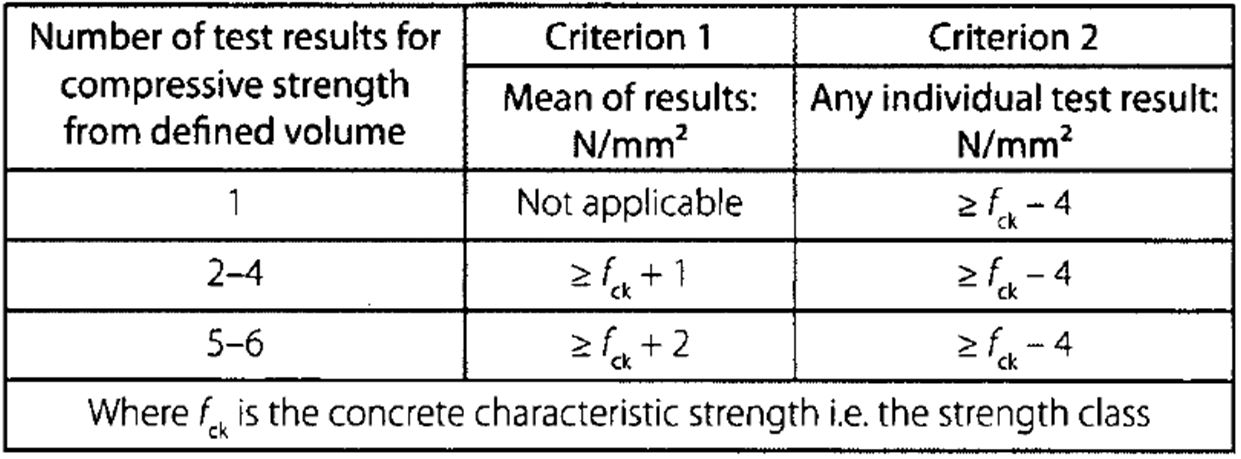
The compressive strength testing of large numbers of concrete samples is often done as part of large or medium sized concrete projects. When large numbers of concrete cube tests are done there will naturally be some outliers with the strength results at the low end of the specification. In order to ensure with reasonable certainty that the concrete meets the specification the following requirements can be used for the average compressive strength results;
A more detailed analysis is included in the CivilWeb Compressive Strength of Concrete spreadsheet for evaluating concrete cube test results.
Where a large number of concrete cube tests are taken the average value will usually far exceed the minimum compressive strength specified. This margin between the average strength and the minimum strength allows for plant and material variations and to maintain an acceptably low risk of concrete compressive strength test results being lower than the minimum.
In some cases other requirements in the specification such as water-cement ratios or minimum cement contents may result in concrete much stronger than the specified minimum compressive strength. In these cases average strengths much higher than the minimum should not be taken as a sign of poor control by the supplier. In some cases these higher strengths may even cause issues for the installer placing and finishing the concrete. In these cases the producer of the concrete can advise what part of the specification is causing the higher strengths and whether there are any other materials which can be used to meet the specification such as a change in cement type.
Concrete Strength at 7 Days
In many cases an indication of the compressive strength of the concrete is require well before 28 days have elapsed. In these cases concrete cube tests are often undertaken after 7 days or even 3 days in some cases. Concrete gains strength quickly over the first few weeks and extrapolating the compressive strength of concrete at 7 days to meet the specified compressive strength of the concrete at 28 days can be difficult. There are however a number of methods which can be used to estimate concrete compressive strength gain. These are explored in detail in our Concrete Strength at 7 Days post.
CivilWeb Compressive Strength of Concrete
The CivilWeb Compressive Strength of Concrete spreadsheet contains a useful tool which turns specified characteristic compressive strengths into mean compressive strengths. Concrete cube test results can then be compared against the expected mean to determine whether the concrete satisfies the specification or not. The CivilWeb Compressive Strength of Concrete can be purchased for only £5, or the spreadsheet is included in the CivilWeb Concrete Properties suite which costs £10.
Our full Concrete Properties Suite of spreadsheets is available for only £10.
Download Free Trial Version
To try out a fully functional free trail version of this software, please enter your email address below to sign up to our newsletter.

